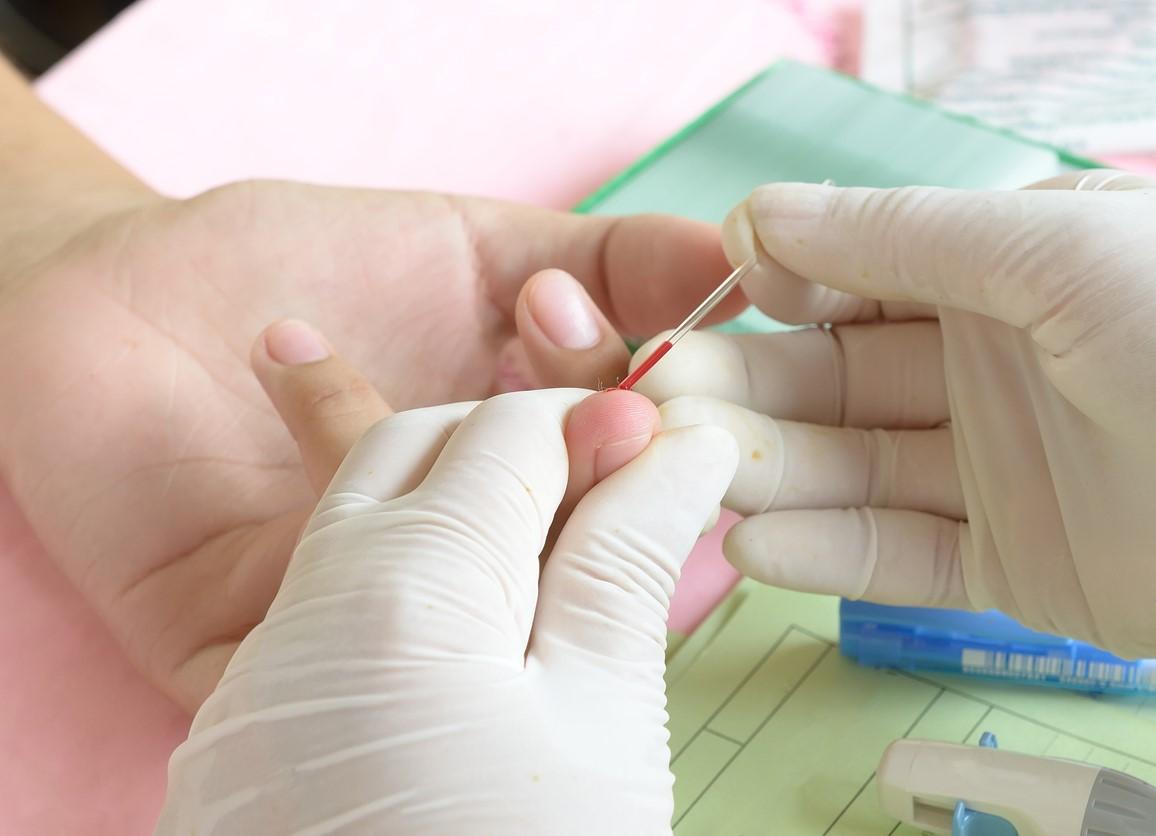A prospective multicenter study found that a rapid diagnostic test based on immune host response could aid clinicians in differentiating between bacterial and viral infections and potentially reduce inappropriate antibiotic use, US researchers reported yesterday in JAMA Network Open.
The study evaluated the FebriDx bacterial and viral test, a disposable point-of-care immunoassay designed to detect and differentiate bacterial- from viral-associated host immune response by measuring myxovirus resistance protein (MxA) and C-reactive protein (CRP) biomarkers in finger-prick blood samples. Increased MxA levels in blood are associated with viral infection, while elevated CRP levels indicate a clinically significant immune response but on their own don't reliably distinguish between bacterial and viral infections.
The test, developed by Lumos Diagnostics, is intended to help clinicians make decisions about therapy. It's currently under review by the US Food and Drug Administration but has been approved for use in Canada, Europe, and Australia.
Sensitivity 70% to 93%, specificity 88%
To evaluate the immunoassay's performance in differentiating bacterial from viral infections, a team that included emergency medicine specialists and researchers from Lumos enrolled 520 patients 1 year and older who had symptoms of an acute respiratory infection (ARI) and a control group of 170 patients who were asymptomatic.
The primary outcome was bacterial- or viral-associated systemic host response to infection, and the test results were compared with the results of an adjudicated comparator algorithm. Treating clinicians and adjudicators were blinded to the results.
Of the 520 participants with symptomatic ARIs (44.2% male, 55.8% female, mean age 35.3 years), 496 had a clinically adjudicated final diagnosis with an immunoassay test result. Among these participants, the comparator algorithm classified the diagnosis as bacterial in 73 (14.7%), viral in 296 (59.7%), and negative for infection in 127 (25.6%).
FebriDx correctly diagnosed a bacterial infection in 68 of 73 participants, demonstrating a sensitivity of 93.2% (95% confidence interval [CI], 84.9% to 97.0%), a specificity of 374 of 423 participants (88.4%; 95% CI, 85.0% to 91.1%), a positive predictive value (PPV) of 68 of 117 participants (58.1%; 95% CI, 49.1% to 66.7%), and a negative predictive value (NPV) of 374 of 379 participants (98.7%; 95% CI, 96.9% to 99.4%). These results exceeded the pre-specified study success criteria.
In the 296 patients classified as having a virus by the comparator algorithm, FebriDx correctly diagnosed a virus in 208 patients, for a sensitivity of 70.3% (95% CI, 64.8% to 75.2%), a specificity of 176 of 200 participants (88%; 95% CI, 82.8% to 91.8%), a PPV of 208 of 232 participants (89.7%; 95% CI, 85.1% to 92.9%), and an NPV of 176 of 264 participants (66.7%; 95% CI, 60.8% to 72.1%). These results also exceeded the pre-specified study success criteria.
Among the 158 control-group participants with confirmed negative test results in the comparator algorithm, the FebriDx test results were negative in 156 (98.7%; 95% CI, 95.5% to 99.7%).
"Our data, along with results from previously published studies, suggest that simultaneous detection of CRP and MxA may distinguish viral and bacterial ARI with sensitivity and specificity ranging from 80% to 95% and 76% to 94%, respectively," the study authors wrote.
Optimizing antibiotic use for respiratory infections
The researchers also collected treatment information on the study participants. Assuming that antibiotics should be prescribed for all patients with bacterial infection and withheld from those with viral infection, they found that treating patients according to the FebriDx results would have improved the antibiotic treatment rate for individuals classified as having a bacterial infection from 45 participants (61.6%) to 68 participants (93.2%), while appropriately withholding antibiotic from 67 participants who did not have a bacterial infection and were unnecessarily prescribed antibiotics.
The authors suggest the test, when used in conjunction with clinical judgment, could help address the clinical uncertainty that contributes to antibiotic overprescribing for ARIs, which are frequently caused by viruses. ARIs account for more than 150 million annual US outpatient visits, and an estimated 50% of the antibiotics prescribed during these visits are considered unnecessary, which contributes to antibiotic resistance.
"The ability to detect a bacterial infection that may benefit from antibiotic treatment, while providing confidence that a bacterial infection is not present and thus antibiotic therapy is not needed, is essential to optimizing clinical management and addressing global antimicrobial resistance," they concluded.























